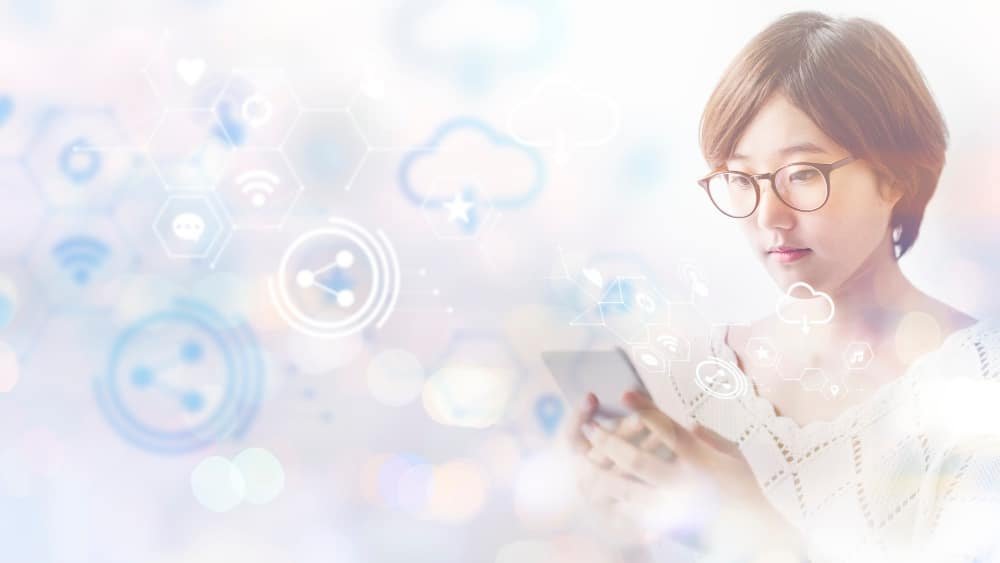The Internet of Things (IoT) has taken off in recent years, transforming the world we live and work in. IoT has revolutionised industries by connecting devices, sensors, and systems by boosting efficiency and productivity.
A significant factor in IoT growth is the advancement of technology. With low-cost sensors, wireless connections, and cloud computing becoming much more affordable to develop, it’s been easier to unite devices and gather data. After collecting this information, it can be analysed for valuable insights that lead to informed decisions.
Today, you’ll encounter IoT in countless sectors, such as healthcare, smart homes, transportation, logistics, manufacturing, industrial processes, and even agriculture. Each industry has found a way to leverage IoT to improve operations while delivering personal.
IoT Applications in Healthcare
The healthcare industry constantly looks for ways to make patient care more efficient while enhancing its quality. It found a solution by implementing IoT technology. Doctors are using IoT-powered devices to remotely monitor patients around the clock, receiving real-time updates on their conditions.
For instance, fitness trackers or smartwatches can keep track of heart rate patterns over time, along with blood pressure and sleep data. With these numbers ready for analysis, any moment they’re ready, abnormalities will be detected immediately, and doctors will be immediately alerted if necessary. This gives room for early intervention in medical emergencies.
In addition to this fantastic feature, medication adherence tracking is now possible through IoT technology. Intelligent pill dispensers can remind patients when it’stime tos take their medication down to the exact second while monitoring ifthey’vee the correct dosage. Medication errors cause serious harm, so avoiding them is crucial, and this device makes that possible.
Within hospitals, health workers are able to use Internet of Things-enabled lights or security cameras to track medical equipment locations at all times, optimise management, and monitor temperature and humidity levels within the building. These tasks assist in cutting costs, improving patient safety, and streamlining operations.
IoT Applications in Smart Homes
Smart homes are becoming more popular daily as IoT technology becomes more accessible. Thermostats, lighting systems, security cameras, and even appliances can all be connected to a smartphone or voice command system for remote control.
Energy efficiency is one of the main advantages of owning a smart home. IoT-enabled thermostats learn the behaviour of everyone living in a house and adjust the temperature based on their preferences; this saves energy and money. Intelligent lighting systems do precisely the same thing by adjusting brightness or turning off when no one is in one’s room.
And finally, if you didn’t, Internet of Things devices also benefit homeowners by automating daily tasks. Imagine waking up with your coffee brewing downstairs before you’ve stepped out of bed! If that sounds exciting, intelligent appliances like washing machines or dishwashers can be programmed to start at specific times during off-peak hours.
IoT Sensor
As an example, GPS systems and IoT sensors can combine in order to provide real-time location updates for vehicles, which ensures efficient fleet management. This then lets logistics companies optimioptimize routes, reduce fuel consumption, and reduce delivery times.
IoT devices have also been used to watch over driver behaviour, which fits safety regulations. If you speed up too quickly or brake too hard, then the sensors will pick it up and allow for training as well as intervention in a timely fashion. This step then better improves road safety.
Finally, using the Internet of Things is how we’ve seen intelligent warehouses. By attaching sensors that can easily track inventory levels and monitor environmental conditions to the IoT, businesses can automate the fulfilment process and streamline overall operations. Not only does this reduce errors and make everything more efficient but it also saves on costs.
With manufacturing being such an important industry, connecting machines via the Internet of Things has allowed for real-time data exchange. This leads to better coordination and synchronisation reduces waste, increases efficiency across the board, and allows for higher-quality products.
Agriculture Sector
Agriculture has also grown through IoT technology since farmers now have easy access to data on soil moisture levels and temperature changes through field-deployed sensors. The same goes for weather conditions in real-time, where farmers now have that ability, too, through IoT sensors that detect rainfall predictions, etc. Automating farming processes is another big convenience here since drones equipped with cameras can monitor the health of a crop without needing any manual labour at all.
The last point I’ll make about security concerns. Many people are worried about cyber attacks since they’ve started to rise along with the increase in several connected devices worldwide. Proper security implementations during production, like strong encryption, will be crucial if we want continued success from IoT tech adoption.
Another problem is the massive amount of data generated by IoT devices. This information often contains sensitive material, including personal details or business intelligence. Enforcing strong data protection measures like encryption, access controls and secure data storage is essential.
Furthermore, as all IoT devices sync together, compromising one device could potentially jeopardize the entire network. To protect against this, we should divide the network. Additionally, managers must install firewalls and regularly monitor for any suspicious activity.
Privacy is another concern with the Internet of Things. These devices can collect a lot of personal information, which raises questions about consent and how companies handle their information. Regulations must be implemented to protect individuals’ rights and ensure responsible data handling.
Future Trends in IoT
The future of IoT looks promising. Here are a few trends that will help bolster its growth:
They combine IoT with artificial intelligence (AI) and machine learning (ML). This allows organ organizations to gain new insights from smart tech on how they operate, which can lead to improved overall efficiency.
Edge computing reduces latency but processes more information closer to the source while not always needing a cloud connection. Great for real-time analysis and decision-making, such as autonomous vehicles or critical healthcare systems.
Finally, by connecting various systems via IoT devices, we can make cities smarter. These systems will actively monitor traffic, optimize energy consumption, improve waste management, and enhance public safety, among other improvements.
Conclusion
The Internet of Things has changed our everyday lives across industries by connecting devices through sensors and systems to deliver personalized services while being more efficient. From healthcare to agriculture, there are countless applications for this technology.
Though the Internet of Things presents many opportunities, it also brings several challenges, especially regarding security and privacy. OrganiOrganizations prioritize measures, protect data, and establish responsible practices so that this technology will continue on its projected path to success.
As we continue to evolve IoT, trends such as the convergence with AI, edge computing, and intelligent cities will push its growth and impact even further. Being a part of this technological revolution, it’s a coming time to be alive, so let’s work unloon cking its full potential for a connected and efficient future!

